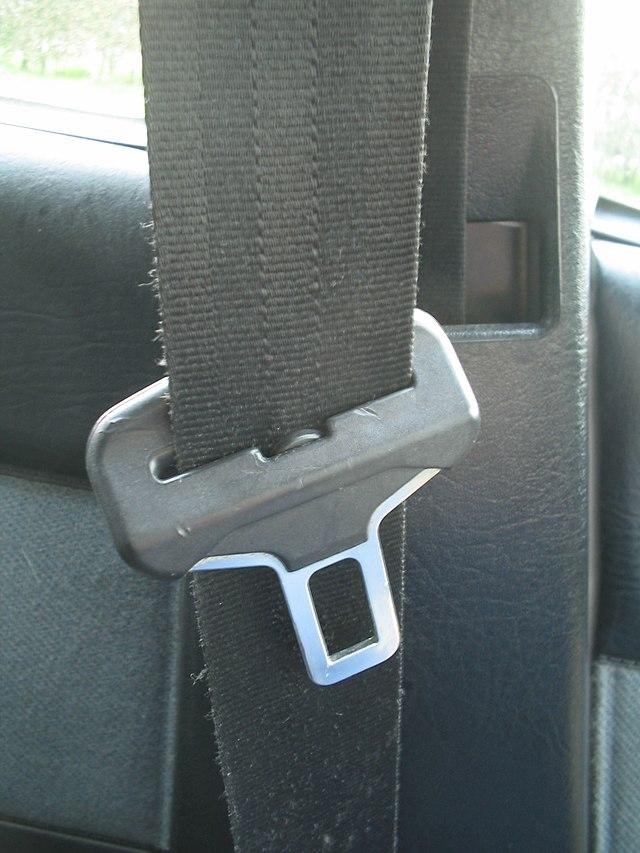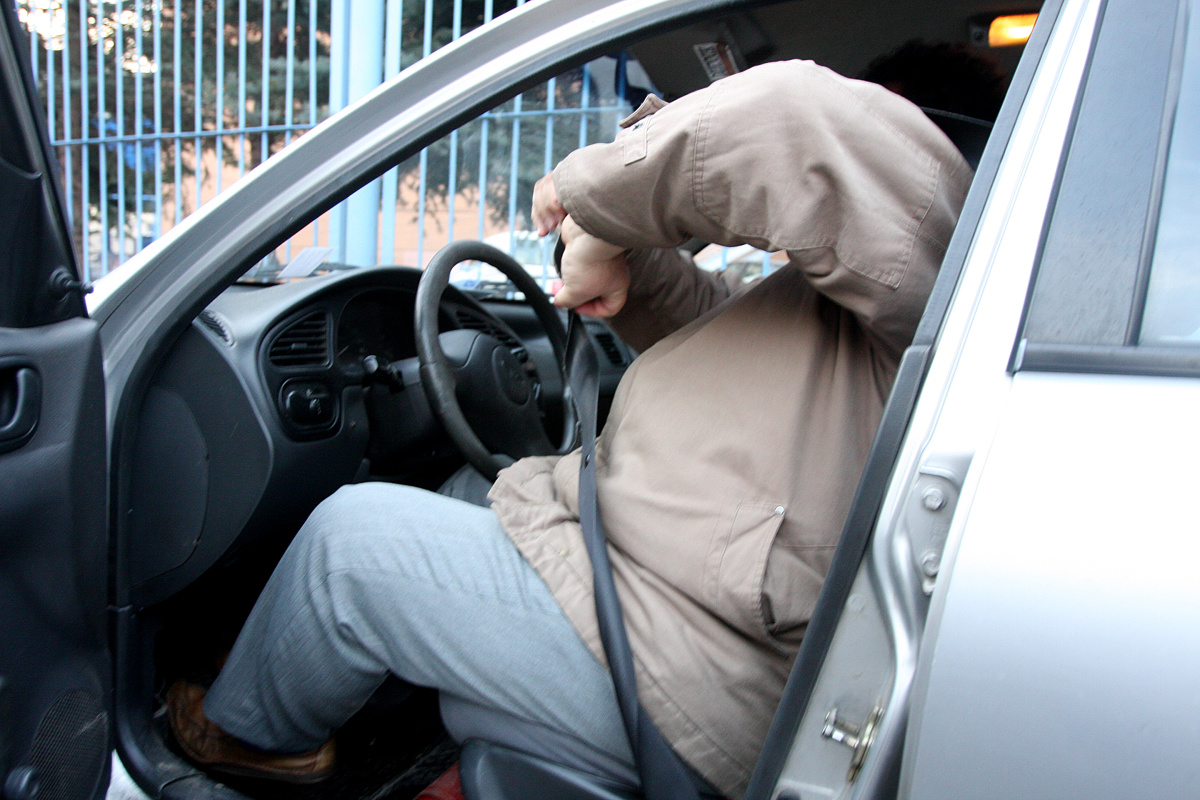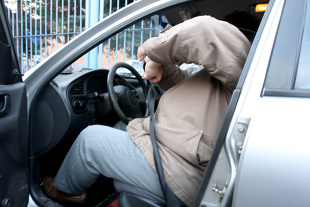
Seat belts. History, fastening rules, current fines
 They found their application in cars in the mid-50s, but then they did not receive recognition. Today, rarely anyone denies the presence of seat belts, because it has been found out how effectively they save health and life.
They found their application in cars in the mid-50s, but then they did not receive recognition. Today, rarely anyone denies the presence of seat belts, because it has been found out how effectively they save health and life.
Seat belts were fastened in 20th century carriages, and in the 1956s they appeared in airplanes. They began to be serially installed on cars only in 1947. The pioneer was Ford, who, however, did not gain anything from this undertaking. Thus, other American manufacturers that offered lap belts at an additional cost met the new solution with reluctance. Even as time passed, not all Americans were convinced by the very favorable statistics for belts, and to this day, their use in the US is not mandatory. In Europe, things are completely different. It was here that the first three-point seat belts were born, supporting the hips, abdomen and chest. They were shown in 544 during the presentation of the 1959 Volvo PV prototype, but this model with three-point seat belts did not appear on the roads until XNUMX.
The editors recommend: Types of hybrid drives
The new solution gained more and more supporters, and in the 1972s it had such an established positive opinion that in some countries they began to introduce mandatory seat belts when driving in the front seats. In Poland, the obligation to install seat belts in the front seats appeared in 1983, and in 1991 a provision was introduced for the mandatory fastening of seat belts outside built-up areas. In XNUMX, the obligation to wear seat belts began to apply in built-up areas, and also extended to passengers in the rear seats in the presence of seat belts (it was only necessary to prepare places for fastening them.
See also: Suzuki Swift in our test
Keeping the body of the driver and passengers in an accident, especially in a frontal collision, is very important to reduce possible injury or save lives. A person sitting without any protection in the front seat can be killed in a frontal collision with an obstacle at a speed of 30 km / h. The problem is that a body moving in such a collision by inertia "weighs" many times more than when it remains motionless. When a car hits a fixed obstacle at a speed of 70 km / h, a person with a body weight of 80 kg, thrown out of the seat, reaches a mass of about 2 tons, accelerating in the field of gravity acceleration. Only a few tenths of a second passes, then the body hits the steering wheel and dashboard parts, falls through the windshield (when driving in the front seats and in the center of the rear seat) or hits the backs of the front seats and, after they break, in the dashboard (driving on the rear seats on the sides). In a frontal collision with another vehicle, there is less g-force because braking is not as fast (crush zones of the other vehicle are in effect). But even in this case, the g-forces are huge and surviving such an accident without a seat belt is almost a miracle. Due to the enormous stresses that seat belts must withstand, they are subjected to very rigorous certification tests. The attachment points must withstand a load of seven tons for 0,002 seconds, and the belt itself must withstand a load of about one ton for 24 hours.
 Seat belts, even in their simplest form (three-point, inertia), allow you to keep the body of passengers next to the seats. In a frontal collision, drivers experience huge accelerations (can cause internal injuries), but they are not "thrown" out of the seats and they do not hit the car parts with great force. It is important that seat belts are fastened in both the front and rear seats. If a rear seat passenger does not fasten their seat belts, in a head-on collision, they will crash into the back of the front seat, break it and seriously injure or even kill the person sitting in front.
Seat belts, even in their simplest form (three-point, inertia), allow you to keep the body of passengers next to the seats. In a frontal collision, drivers experience huge accelerations (can cause internal injuries), but they are not "thrown" out of the seats and they do not hit the car parts with great force. It is important that seat belts are fastened in both the front and rear seats. If a rear seat passenger does not fasten their seat belts, in a head-on collision, they will crash into the back of the front seat, break it and seriously injure or even kill the person sitting in front.
A prerequisite for the correct functioning of the seat belts is their correct position. They should be of sufficient height, fit snugly to the body and not twist. The fit to the body is especially important. The backlash between the body and the belt means that in a frontal collision, a body moving forward at high speed first hits the belts and then stops them. Such a blow can even cause a fracture of the ribs or trauma to the abdominal cavity. Therefore, seat belt pretensioners are now widely used, which press the seat belts against the body during an accident. They must be fast, so they are pyrotechnically activated. The first pretensioners were used by Mercedes in 1980, but they didn't become popular until 90. Seat belts are progressively improved to provide the best possible protection. In some solutions, they are temporarily tightened on the body immediately after fastening, and then loosened again. As a result, they are ready for the appropriate voltage in the event of an accident. In recent developments, seat belts in the rear row of seats have a kind of airbag in the most vulnerable part (thoracic region) to prevent injuries caused by the belts.
For new cars, manufacturers do not indicate the time interval after which seat belts must be replaced. They have an unlimited service life, as do airbags. In older cars it is different, sometimes a replacement is recommended after 15 years. So it's best to find out, preferably through a dealer, how it looks with a particular model. Belts often require replacement even after minor collisions, including when the pretensioners have failed. It happens that the winding mechanism works with great resistance or even sticks. If the tensioners have worked, the belts must be replaced. Avoiding repairs and using defective belts poses a huge risk to health and life.
Fine for unfastened seat belts
A person who fails to comply with this obligation is liable for driving without wearing seat belts. The fine for driving a car without wearing seat belts is PLN 100 and 2 penalty points.
The driver must ensure that everyone in the vehicle is wearing a seat belt. If he does not, he risks another fine of PLN 100 and 4 demerit points. (Section 45 (2) (3) of the Law on Road Traffic of June 20, 1997 (Journal of Laws of 2005, No. 108, item 908).
In a situation where the driver warned passengers to fasten their seat belts and did not know that the passengers did not follow the instructions, he will not pay a fine. Then each passenger who does not fasten their seat belts will receive a fine of PLN 100.
How to fasten seat belts?
Properly fastened belts should lie flat against the body. The waist belt should wrap around the hips as low as possible in relation to the stomach. The chest strap should pass through the center of the shoulder without slipping off the shoulder. To do this, the driver must adjust the upper seat belt attachment point (on the side pillar).
If the rider is heavily dressed, unzip their jacket or jacket and bring the straps as close to the body as possible. After fastening the buckle, tighten the chest strap to eliminate any slack. The belt works the more effectively, the tighter it fits the protected person. Modern self-tensioning belts do not restrict movement, but can become excessively loose.
A seat belt is the best protection for the driver and passengers when combined with a properly adjusted head restraint and airbag. The headrest protects the neck from very dangerous and painful injuries in the event of a sharp tilt of the head back, and the pillow protects the head and chest from hitting the steering wheel, dashboard or A-pillar; however, the basis of safety is well fastened seat belts! They will keep anyone buckled in a safe position, even during rollovers or other uncontrolled movements.
